“Resistance Through Art”: Brendan Bellomo and Paula DuPré Pesmen on PORCELAIN WAR
Porcelain War | Adam Manery
Porcelain War follows three Ukrainian artists – Slava Leontyev, Anya Stasenko, and Andrey Stefanov – as they do their best to create beauty against a backdrop of violence and destruction. To these three, art is not secondary. It is their lifeblood, and they understand that when the enemy kills the artist, they kill the people. As such, they raise their paintbrushes as a tool of resistance, but as the war evolves, they are forced to raise guns as well. Still, we follow them through daily shelling as they continue to create their art in a documentary that never attempts to construct an artifice, but simply mirrors the chaos of life in war.
It was truly an honour to sit down (virtually) and talk about Porcelain War with co-director Brendan Bellomo and producer Paula DuPré Pesmen. We talk about the imposed juxtaposition between beauty and violence, and how the film mirrors this through its composition, and musical score. Bellomo expands on his relationship with the artists and how he created an impromptu film school for these first-time filmmakers. Pesmen emphasizes the collaborative nature of the project and how there was only one possible choice when it came to the music. Together, we reflected on the chaos of war and our hope for the future.
The Title of “Porcelain War” and Reflecting an Imposed Juxtaposition
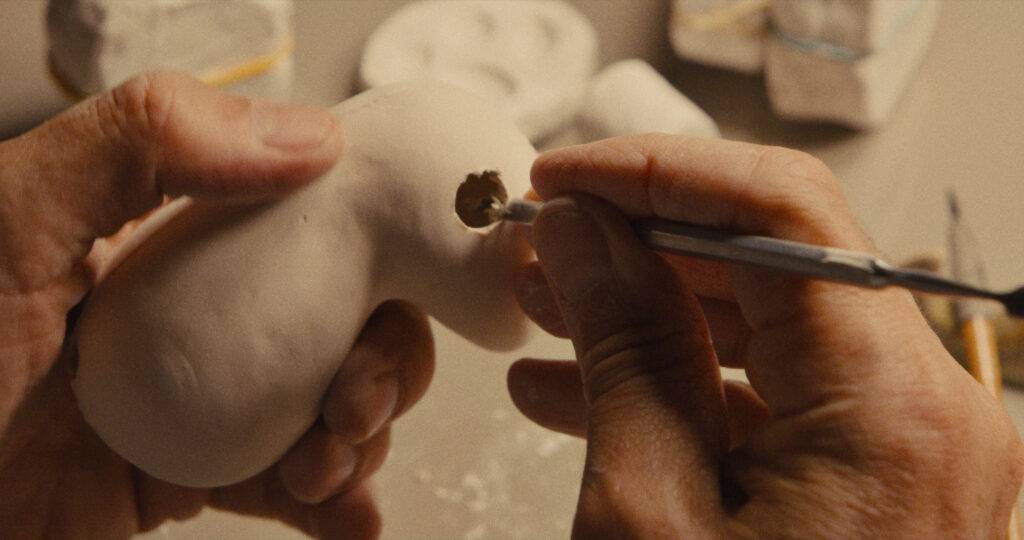
Adam Manery
The film’s title has been talked about a lot, but I think it’s still worth exploring. How did “Porcelain War” come to be, and how does it connect to the core messaging of the film?
Brendan Bellomo
If you look at Anya and Slava’s work, Slava is a sculptor, and Anya, his wife, is a painter. And they’re creating these porcelain figurines that they’re decorating with brushstrokes, which is what Anya calls her language. These are the stories of their lives, and yet they’re doing it on what is seemingly a very fragile, very small, very small format. As Slava says in the film, “Porcelain is breakable, but it can be restored”. There is something eternal about it. It can be mended, it can be put back together. And in this way, it’s absolutely unbreakable.
So, I think the title, Porcelain War, is a combination of two things that seem like they don’t go together. Something small and seemingly destroyable can somehow stand up against conflict. It can stand up against what is a genocidal war, where museums and universities are destroyed, and artists are killed, and yet they’re making new work. And even though they’re doing it on this small format, it’s going to be on the big screen. It’s going to go into audiences’ hearts. It’s going to give them a new perspective.
“When you arrive at a river, Slava would have to de-mine it before they could even go and film.”
This title, which came from one of our amazing producers, Aniela Sidorska, perfectly resonated with everybody. Even in its translation into Ukrainian, it perfectly resonated with Slava and Ania, and they felt that it embodied their spirit and what they do in their art.
Adam Manery
Its resonance runs deep.
You mentioned how this porcelain art is quite small, and it becomes evident early on how it is being juxtaposed against the enormous chaos, violence, and destruction in the background. Was this contrast a conscious choice?
Brendan Bellomo
This was something that was imposed in the same way that the war came to Ukraine. This was a peaceful, democratic nation that was unpromptedly invaded. When we first received the footage, the first roll of film was focused on nature, on beauty, on inspiration. And immediately there was there was destruction, there was shelling, there was wreckage, as you go from one shot to the next. And this is the raw footage that’s coming in. It’s not an editorial choice. It’s not something that any of these people wanted or asked for.
They are being subjected to this situation. And then as artists and as Ukrainians, they’re saying, no, we’re going to live our lives. We’re going to keep creating. And then it would shuffle back to finding inspiration, going out to look at the colours of the fall leaves, and yet when you arrive at a river, Slava would have to de-mine it before they could even go and film. So this act of defiance came as a response to an imposed juxtaposition in their lives. The film is merely reflecting that in its form.
Making a Movie Across the World and the Music of DakhaBrakha
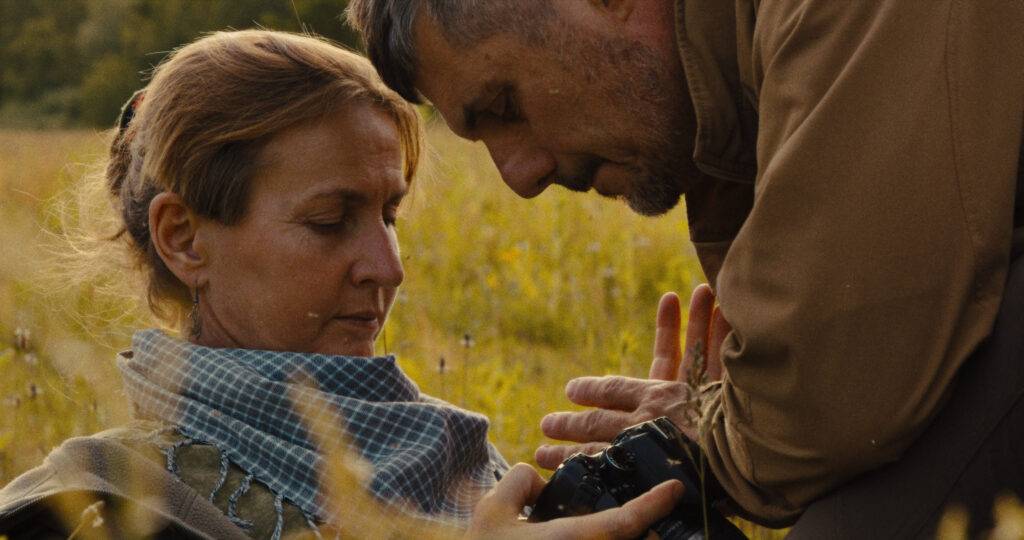
Adam Manery
You’re right – there’s no choice. I can only imagine how difficult this was to make, from both a directorial and production perspective. What was it like bringing this to the world with three artists who have never made a film before?
Brendan Bellomo
Well, it was a joy. It was an absolutely unique experience. And it was also a nightmare challenge from a logistical standpoint. We were separated by 6,000 miles. I was working in LA. Slava was in Kharkiv with Andrey, our cinematographer, who’s an oil painter, and who has never used the camera before. We didn’t speak the same language, so we worked together with an interpreter. We’d sent them one camera and we created what is essentially an impromptu film school so that they could take their instincts as visual storytellers in their medium – sculpting and painting – and translate that into cinema.
“They shot it as though it could be the last of their existence.”
But it wasn’t just about “Here’s how to use a lens or focus or an audio recorder”. It was about the form, the grammar, the art of cinema. You have closeups and wide shots. Different choices in lighting and composition, and editing and how all of these things can work together with sound. And so they were inspired. This was like a new paintbrush for them. It was amazing to work together in deep collaboration.
Paula DuPré Pesmen
The collaboration was key. We never looked at them as subjects of the film. They were always partners and collaborative partners. So, we wanted to figure out ways we could continue to give them tools and support them to tell their story. Slava talks a lot about how they don’t go away to war there. It’s actually at their doorstep. It’s right outside the window. So that was another challenge. They were in a war zone and trying to protect their homes and their families and their lives, and their culture every day while we were empowering them to make a film.
Their bravery was just astonishing. They were always willing to take the camera and go wherever they went. And they cared about capturing everything they saw around them. So Slava shared like every flower, every butterfly, every human, even themselves that they were filming, they shot it as though it could be the last of their existence. And I think we had that sense throughout, Like, what are they capturing? What’s important to them right now? It’s scary what they’re facing, but what’s important to them? So they showed us its beauty. Its beauty and its art and its resilience. And they wanted people around the world to make sure that they’re not forgotten. I think they did a beautiful job with that.
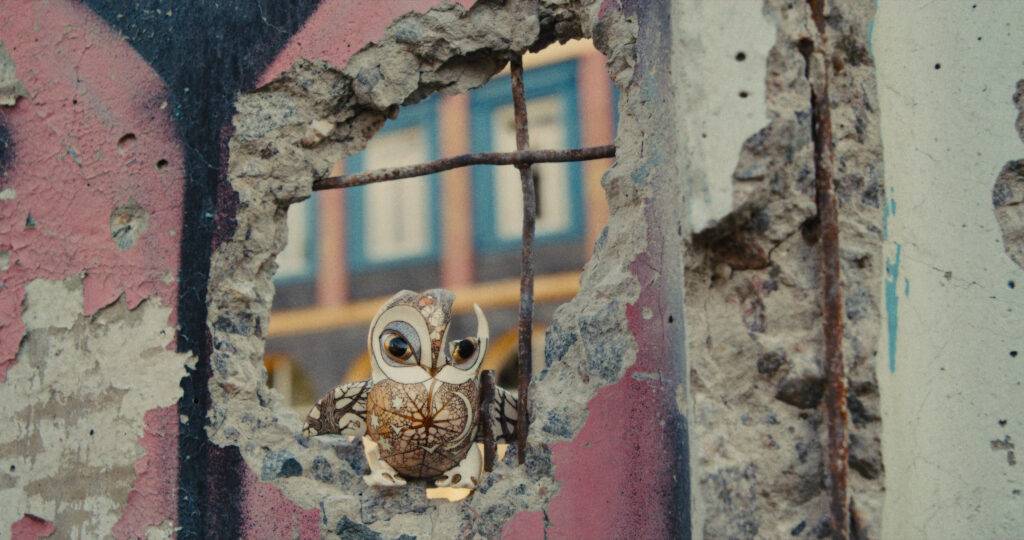
Adam Manery
They speak quite often about how in war, there is an attempt to destroy the artist, and when one destroys the artist, they destroy the people. This film puts art at the forefront – not just through the porcelain and the cinematography, but also through the music. What DakhaBrakha has done here is such a crucial piece to the film. How did they become a part of the project, and how do you see the impact of music in Porcelain War?
Brendan Bellomo
Early in the process, I asked Slava if there was any music he felt would or that he loved. He said, there’s something we listen to, something that Andrey even listens to while he paints, and it’s DakhaBrakha. He played “Vesna” for me, the opening song we use in the film. I was absolutely blown away. Not only were the lyrics, the melody, the instrumentation all beautiful, but they also honoured nature. The members of the band make these animal sounds. They’re vocalists, but they’re also all percussionists.
They create this huge sound because they’re switching instruments in the middle of tracks. There was something deeply Ukrainian about it. And I thought, “Let’s try cutting a scene to this” and then another and another and another and another. All of a sudden, the entire rough cut to the film was all DakhaBrakha. I went to Paula and Aniela, and I said, “Guys, what do we do?” It just had to be this.
Paula DuPré Pesmen
As soon as we started seeing Brendan cutting to it, we started putting our heads together – “How are we going to find this band”? It’s perfect, and nothing is going to be even close to that for this film. The more scenes were coming in with that music, we knew we had to find them. So we started to stalk them on social media. They were traveling to different cities every day, but we even bought tickets to one of their shows. We were going to go and stand in the front row, “Call us”.
“[BluBlu Studios] created 7,000 hand-drawn frames of animation, and we mapped these under the glaze of the figurines.”
Luckily they got back to us and we were able to do a Zoom call with the manager. We were on Zoom at six in the morning and she popped on, and she was in tears. She had shelling all night around her building in Kyiv. It was an emotional night for her. We told her what we were doing, and she said she was going to send us all the music, their full library, even music that wasn’t released yet. And anything we could send to them, they were going to donate to help musicians and their families who are fighting. So, that’s what happened. We licensed the music for the entire film, and it really is a character to me. And then they were able to help other musicians who were fighting with those resources.
Animation in Porcelain War and Where the Artists Are Now
Adam Manery
It so perfectly encapsulates so much of the film. There was additional artistic collaboration through a group of Polish animators as well. How did this come to be?
Brendan Bellomo
BluBlu Studios is a collective of animators in Warsaw, Poland, and they felt so tied to Ukraine, such a kinship with them because they’d had this experience of Russian oppression in their past. They worked for a year to create the animations we have in the film. In order to do this, they studied 20 years of Anya’s work. They looked at photographs of other figurines that she’d done so that if they drew, for example, an antenna on a small bug, it would be the right shape to match Anya’s work. They created 7,000 hand-drawn frames of animation, and we mapped these under the glaze of the figurines. It was a miraculous collaborative project. It was artists from one country helping another and dissolving these borders into one simultaneous collaboration.
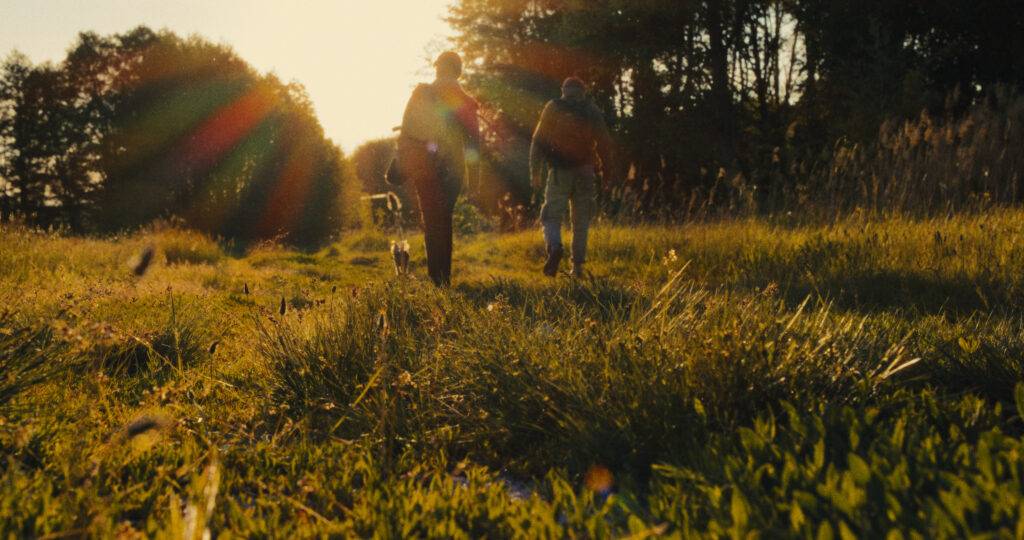
Adam Manery
Amazing. The response to the film has been quite positive – you even took home the U.S Grand Jury Prize for Best Documentary at Sundance. Still, attaining distribution seems to have been a difficult process. Thankfully, Picturehouse picked up the rights for North America, but there still isn’t anything announced for Europe or any streaming. What can you say about this distribution journey?
Brendan Bellomo
It’s been an intriguing journey. On the one hand, we’re in such a difficult period. You look at streaming, and we don’t have distribution yet in that regard. But yet, we were so honoured at Sundance, and audiences were saying something different than distributors. They loved the film. We were so lucky to travel to so many festivals very humbled to be one of the most awarded documentaries of the year with many audience awards. The audiences were saying that this was the type of story they wanted to see.
“Despite their fatigue and everything they’ve been through, they’re continuing their resistance.”
Ukrainian audiences were saying that Porcelain War feels like what we’re living right now, more than any other film. And the result of that is an amazing theatrical partnership with Picturehouse. We’re so excited to work with them for our theatrical release and we hope to bring the film to the world. But it is a unique time, especially for documentaries and independent film.
Adam Manery
Before I let you go, I need to ask – where are Anya, Slava, and Andrey now?
Brendan Bellomo
When we completed the film, we met for the first time in person at Sundance in Park City, Utah. They stepped off the plane and we hugged for the very first time, even after having made this entire film together. It was incredible because by telling their story, Andrey and his wife and daughters, who he hadn’t seen in so long, were able to be together and to witness Porcelain War with audiences and to see their joy, their tears, their laughter, their standing ovation in the theatre. It was remarkable.
And yet, they are still dealing with the war. While Anya and Slava have been able to be here in the United States with us, traveling with the film, Andrey is now back in Kharkiv. He’s training civilians. His wife and daughters are safe in Luxembourg, but they’re separated. The members of Saigon miraculously are OK, but they’re still fighting. And they’ve gone on to even more dangerous battles than Bakhmut, which you see in the film. Despite their fatigue and everything they’ve been through, they’re continuing their resistance. | Porcelain War
Find out more about Porcelain War here.
Brendan Bellomo and Paula DuPré Pesmen
BRENDAN BELLOMO (Director, Writer, Editor) was the recipient of a 2009 Student Academy Award for Live Action Narrative. Beginning his career in visual effects, he supervised the 2012 Sundance Grand Jury Prize winner and Oscar nominee for Best Picture Beasts of the Southern Wild (Fox Searchlight).
Most recently, Bellomo was the executive producer on the Netflix Original Chupa. Bellomo worked closely with Annie Leibovitz on the global exhibit “Women: New Portraits” and designed the curriculum for the first visual effects course at NYU’s Tisch School of the Arts, which led him on the path to eventually pair with his directing partner, Slava Leontyev.
PAULA DUPRÉ PESMEN (Producer, Writer) is an Emmy Award and Grammy Award-winning producer who produced the Oscar-winning feature documentary The Cove. In 2010, she was named producer of the year by the PGA. Pesmen launched her film career on the producing teams of such narrative features as Harry Potter and the Sorcerer’s Stone, Harry Potter and the Chamber of Secrets, Harry Potter and the Prisoner of Azkaban, Rent, Mrs. Doubtfire, Home Alone 2 and Stepmom.
She produced the renowned documentary features Chasing Ice (Emmy winner, Sundance Cinematography Award, SXSW Audience Award), Keep on Keepin’ On (Audience Award winner at Tribeca and Palm Springs film festivals) and Quincy (Grammy winner). For her philanthropic work, Pesmen was named a “Local Hero” by Oprah Winfrey’s O magazine.
More Interviews HERE
Full Written Reviews HERE

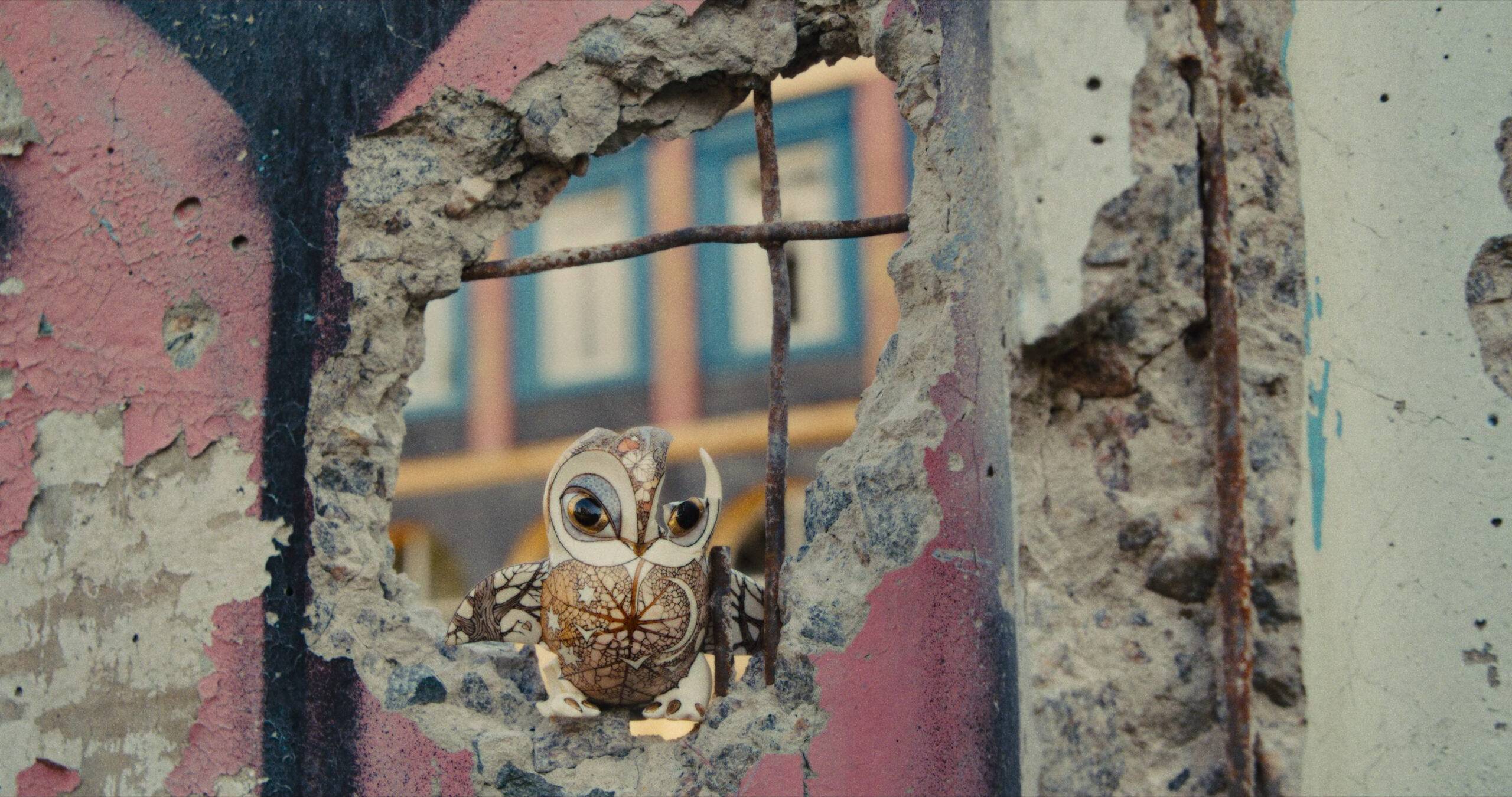



Pingback: Top 10 Most Underrated Films of 2024 - Points of Review
Pingback: Sundance Film Festival 2025 Award Winners - Points of Review | Film Reviews